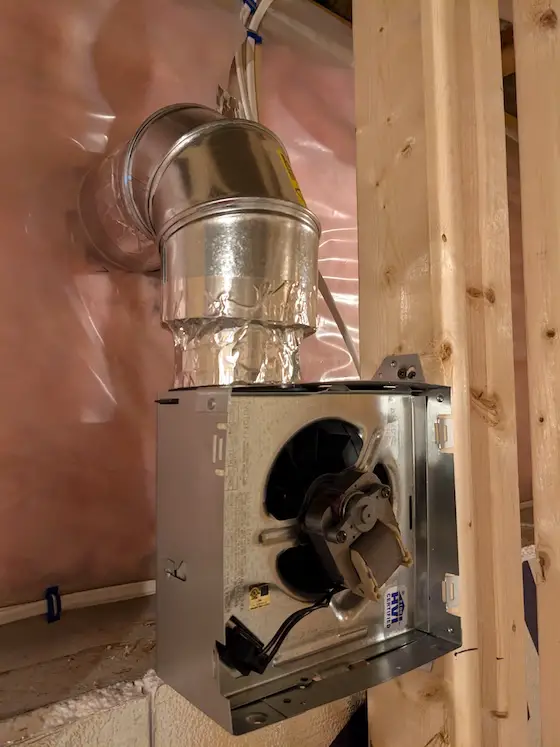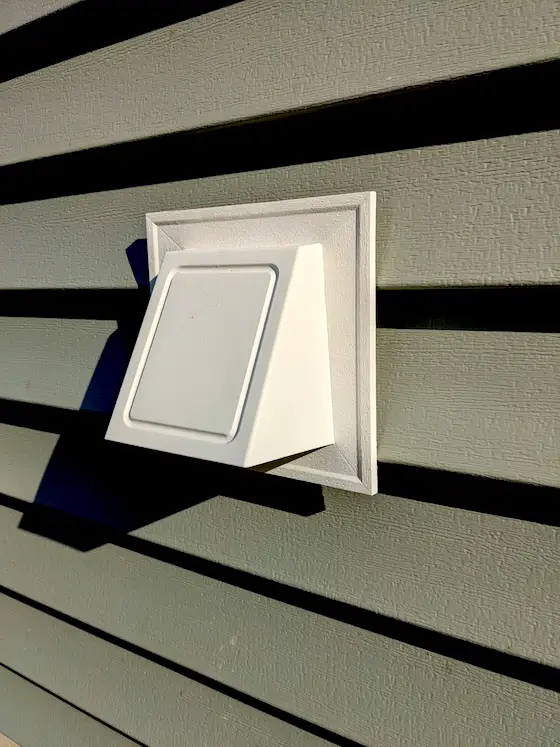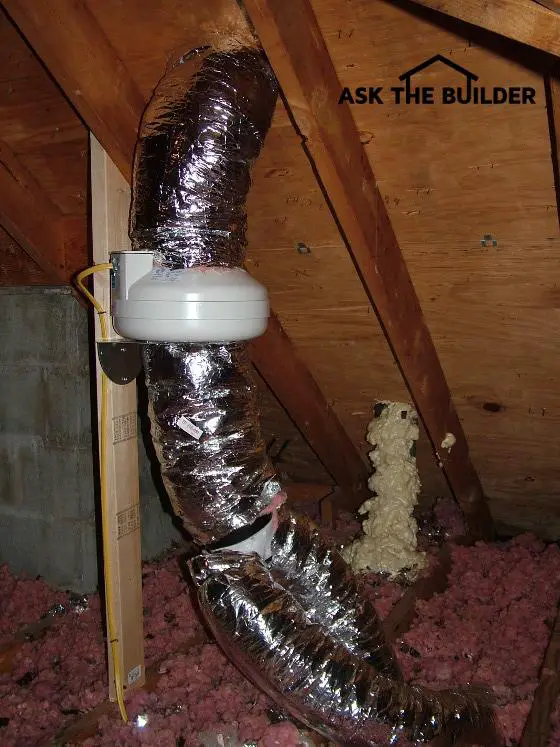Bath Vent Fan Facts

Bath Vent Fan - This is an inexpensive bath vent fan installed in a wall to meet the building code requirements for fresh air when no window is in the bathroom. Copyright 2024 Tim Carter
Bath Vent Fan Facts - Your Roof is Not Leaking
You may have had the good fortune to live and work inside old homes. I’m talking about houses that were built over 100 years ago. The architects who designed them and the builders who built them were wise.
I started my building career in Cincinnati, Ohio. My good friend John and I started a small handyman business in college. One day while hanging out in the student center at the University of Cincinnati, we saw a help-wanted posting and applied for the job. Karl was hiring laborers to help rehabilitate foreclosed houses. Each one of these houses was built in the late 1800s or early 1900s.
Each house we worked in had a window in the bathroom. Some bathrooms had two windows. The house I grew up in had a wretched leaky steel casement window in the sole bathroom in the house. Architects knew that bathrooms needed fresh air for a host of reasons. The windows also provided wonderful natural lighting.
Some New Architects Ignore History
Some young architects decided windows in full and half-bathrooms were old-fashioned. They kicked bathroom windows to the curb. The building codes responded by requiring mechanical ventilation in bathrooms.
A tug-of-war ensued in the late 1990s, in my opinion, as houses and windows became more and more airtight. The building code strove to keep up as less and less air leaked into homes. The houses of old had windows that leaked lots of air. It was rare to come across an up-down sash window that had weatherstripping.
Mold and mildew issues rarely were a problem in old houses, but soon became a major problem in newer homes. The air leakage in old homes helped dry out bathrooms in minutes or hours before mold and mildew could grow.
The Building Code is a Set of Minimum Standards
It’s important to realize the building code is a set of minimum standards. If your house just passes the code, it’s like getting a 70 percent on a test. You can always build better than the code requirements. This is true with bathroom fan ventilation. You can purchase powerful bathroom vert fans that will exhaust more air than is required by the current code.
I’ve shared in previous columns that I’m helping my son finish his basement. This past weekend we installed three fans in the basement. One was in the full bathroom we’re adding, one was in a bedroom, and the third fan was in an open area that extends throughout the basement.
The current building code requires this much mechanical ventilation when you don’t have windows that can open and provide enough old-fashioned air exchange. Keep in mind the code officials know that even the best windows do leak some air. Basements that have some windows do provide some fresh air even when closed.
The Water Dripping From Your Fan is Not Rainwater
Water might leak from your bathroom fan. You may think it’s a roof leak when, in fact, it’s condensation flowing down the vent pipe back into your bathroom. Insulated vent pipes will prevent this condensation. This is the best way to flash a bath vent fan.
The condensation happens when uninsulated bathroom vent pipes pass through cold attic spaces. The pipe gets cold in the winter months. The moist warm air sucked from your bathroom as you shower starts to flow through the cold pipe. Condensation starts to form on the inside of the cold pipe just as it forms on the outside of cold soda or beer cans in the summer months.
Bath Vent Fan Must Exhaust Outdoors
You could have a much bigger problem. Your builder or remodeler may have terminated your bathroom vent fan into the attic space. The moist humid air dumps into the attic. If you live where it gets cold in the winter, this moisture will condense on the underside of the roof and on the roof-framing timbers or trusses. Mold and wood rot will cause huge issues over time.
The best way to exhaust bath fans to the outdoors is through a wall. Never exhaust them in soffits as the moist air can drift up through soffit vents into an attic.

This is the ideal way to vent a bathroom fan. The exhaust air is exiting through a wall. You want to eliminate the possibility of moist air entering an attic space. Photo credit: Tim Carter Copyright 2024
Remote Bath Vent Fan is Quiet
You may not like your noisy bathroom fan. Remote bathroom exhaust fans can be located ten, or more, feet away from your bathroom.

The off-white, overweight flying saucer is really a quiet bathroom exhaust fan. You can see the flexible insulated exhaust pipe that prevents condensation. The humid bath air goes out the roof. © 2024 Tim Carter
These fans work similar to your heart. Just as your heart draws blood back from your fingers and toes, these remote fans pull air out of bathrooms. The fans then push the air outdoors via outlets in the side walls of gable ends. They can also connect to roof outlets so long as snow doesn’t accumulate on your roof.
The Best Pipe and Tape
I feel the best exhaust pipe to use is either aluminum or galvanized sheet metal. Do NOT use the plastic material that looks like a slinky. Be sure the longitudinal seams in the pipe always point to the sky to ensure condensate doesn't leak out of the pipe.
You should use real metallic duct tape, which the pros use to seal the pipe joints and the pipe at the fan and outlet.
I urge you to do lots of research about bathroom fans before you build or remodel. There are remarkable fans available that will do a great job of exhausting moist air. Be sure your builder or remodeler tapes all the seams of the metal vent pipe. Use real metallic duct tape that HVAC professionals use to seal their ducts. This tape is affordable and easy to apply.
Column 1578